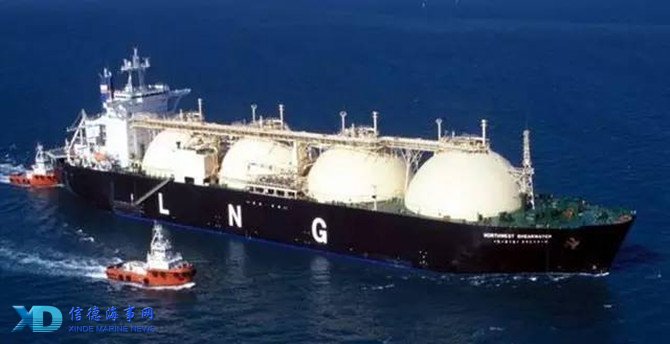
Chinese LNG prices have fallen by 33 percent in the past few days, thanks to the governmental regulation and rebalancing of supply and demand, ending the ever soaring price of the clean fuel due to China's winter gas crunch.
The price of LNG has fallen by 33.43 percent in the past 10 days from the more than 8,477 yuan ($1,304) per metric ton on Dec 25, 2017, to 5,644 yuan per ton on Wednesday, according to commodity data supplier 100ppi.com.
Analysts believe the falling price illustrates the hardest time of the gas shortage has ended with a rebalanced supply and demand.
"The increasingly stable natural gas supply through boosting domestic yield and the reopening of some coal-fired power plants have helped ease the fuel shortage," said Li Li, energy research director at energy consulting firm ICIS China.
"The warning of the National Development and Reform Commission, which has ordered several regions to meet with natural gas producers, liquefied natural gas terminal operators and traders last December to regulate the market, has also helped slow down price rises."
Chinese demand has pushed Asian liquefied natural gas prices to a three-year high, as importers in China scramble for supplies in the face of Beijing's move to reduce urban air pollution.
"The gas shortage is more of a temporary issue rather than a long-term problem. However, it's necessary we learn lessons from it," she added.
Li said China should come up with massive gas storage facilities to avoid similar situations in the future, as a logistics constraint was one of the major contributors leading to the gas shortage.
Liu Yijun, a professor at China Petroleum University, said there will be no major shortage in the near future unless there are cold snaps or extreme weather.
China's State economic regulator's regulation has stabilized the soaring price and quelled speculation, he said.
According to Marc Howson, senior managing analyst of LNG at S&P Global Platts, a shift back to greater usage of thermal coal for power generation across the country, as well as significant restocking activity by major LNG imports late last year have alleviated the gas shortages in northern China and depressed domestic LNG prices.
China's soaring demand for LNG imports has been driven by cold weather, coal-to-gas switching policy directives to curb air pollution, and the large-scale replacement of coal-fired heating with gas-fired boilers in domestic households, he said.
The country overtook South Korea to become the world's second-largest LNG importer in 2017, according to completed voyage data compiled by S&P Global Platts. Northeast Asia's four largest buyers imported a total of 172.28 million tons in 2017, up 12.65 percent year-on-year.
Please Contact Us at:
admin@xindemarine.com

